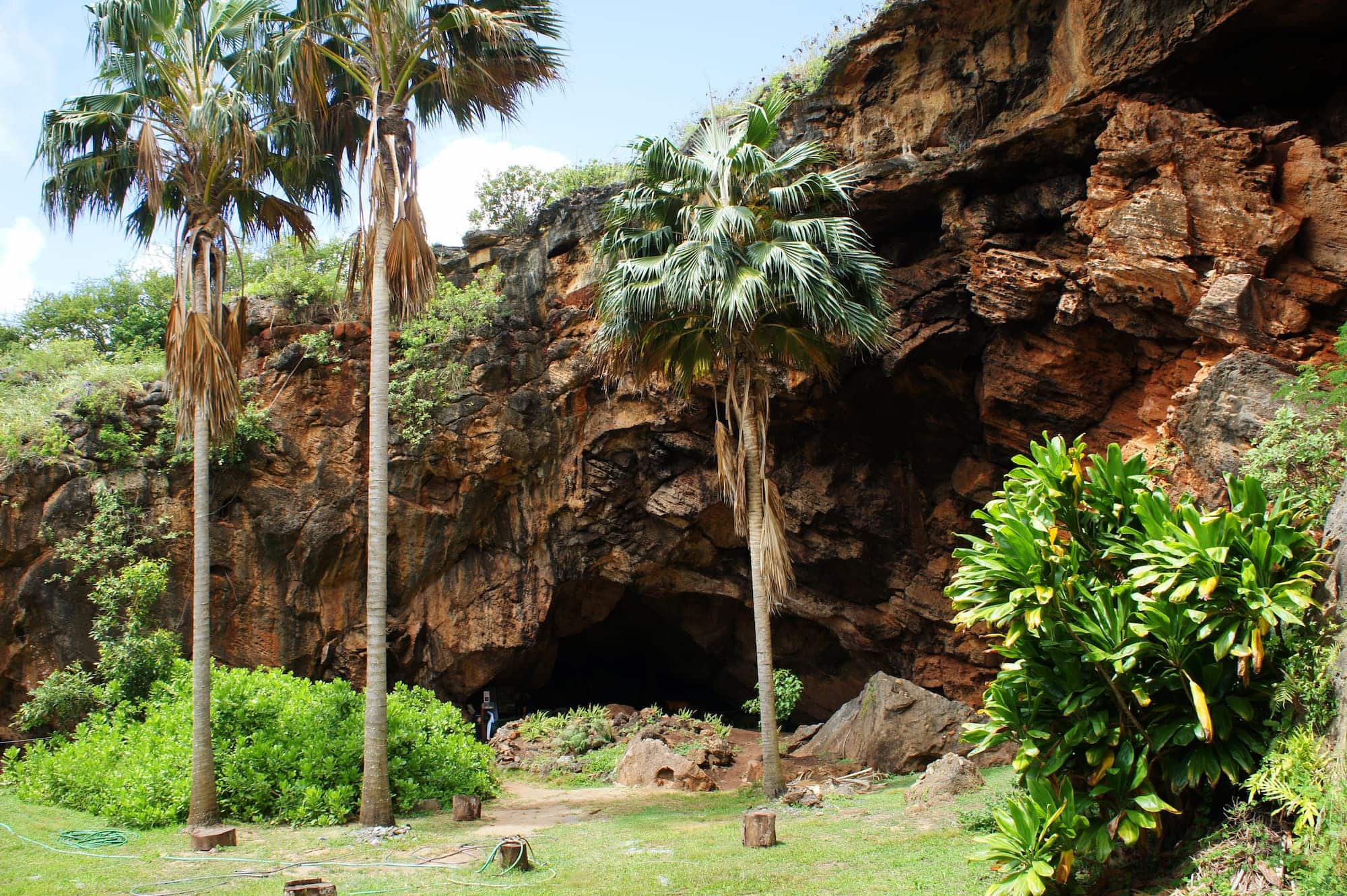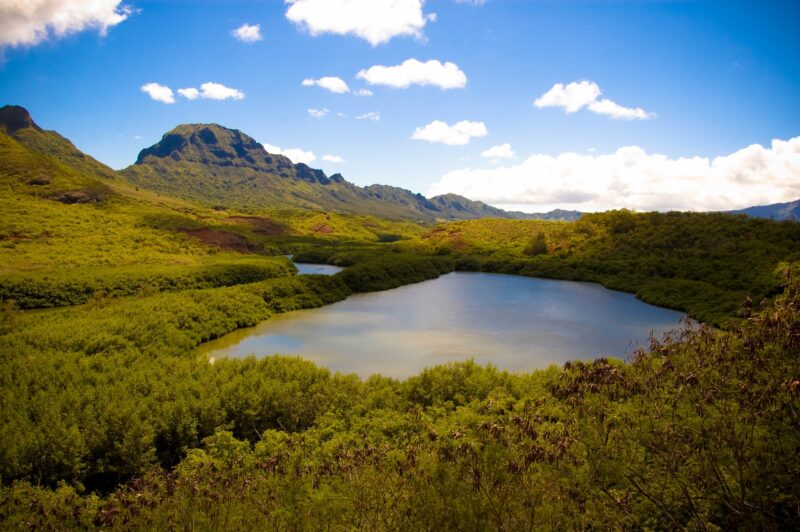Hawaiʻi is much more than beautiful beaches and inspiring scenery. It carries a fascinating international history and a strong cultural component that’s rich in Polynesian wisdom, folklore, and customs. Though much of your relaxation and vacation will surround the former aspects, we encourage you to make time to experience the latter, as they will provide important context and understanding.
In this article, we highlight points of interest around Kauaʻi that showcase and preserve important moments in Hawaiian history, as well as events and eras that influenced and molded modern day Hawaiʻi.
Table of contents
- Museums
- Historic Places and Palaces
- Cultural Experiences
- Archaeological Sites
- State Parks
- Map with all places mentioned in our guide
Table of Contents
- Museums
- Historic Places and Palaces
- Cultural Experiences
- Archaeological Sites
- State Parks
- Map with all places mentioned in our guide
Below are some of the many educational and cultural opportunities you can find on Kauaʻi, including religious and archaeological sites, museums, and historical points of interest, among others.
Museums
Considering Hawaiʻi is an outdoor paradise, we don’t recommend spending too much time inside. However, a brief visit to a museum or two can really help shape your understanding of the islands.
Kauaʻi Museum
If you only have the time or desire for one museum, choose the Kauaʻi Museum. Small but dense, you can get a good overview of the island’s history in about an hour, including insight into the lives of Native Hawaiians and the former Hawaiian monarchy. You will also be introduced to Kauaʻi’s evolution and the exposure to outside influences, such as European and American visitors, and learn how all these factors combined to shape Kauaʻi into what it is today. Plus, special exhibits and more cultural stories.
Recommended visit: 1-2 hours.
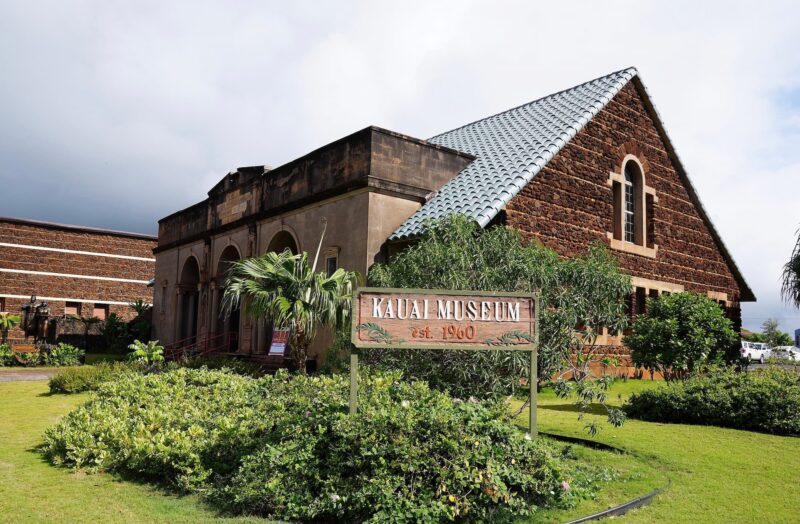
Kauai Museum on Kauaʻi. Image by Richard N Horne – CC BY-SA 4.0, Link
Kōkeʻe Natural History Museum
This museum, located in Kōkeʻe State Park, provides an overview of Waimea Canyon’s natural history. It’s very small, requiring only a half hour or so to explore, but those interested in learning some background and natural history about the area will appreciate its exhibits. It is an easy and rewarding stop to include on a visit to Waimea Canyon.
Recommended visit: Thirty minutes at most to browse. Can combine with a visit to the adjacent Kōkeʻe Lodge and Restaurant for a drink or snack.
Historic Palaces / Places
Before it became a part of the United States, Hawai‘i was an independent kingdom that operated under its own royal monarchy. Many sites around Kauaʻi speak to different parts of that history and culture.
Fort Elizabeth + King Kaumualiʻi Statue
During the 19th century, Kauaʻi (and all of Hawaiʻi) was heavily and actively influenced by foreign nations. Some were blue-collar workers coming to take part in the sugar cane industry; others were politicians who attempted to exert their outside influence in different ways.
Russia was a part of that game, and although we don’t often associate the Russians with Hawaiʻi, they were certainly mixed up in Kauaʻi’s politics, and for a short time beginning in 1817, Russia built and operated a fort on Kauaʻi that’s known as Fort Elizabeth State Historical Park today.
The Park has become even more special in the past year. In December 2020, a statue honoring Kauaʻi’s legendary king, King Kaumauliʻi, was erected at Fort Elizabeth.
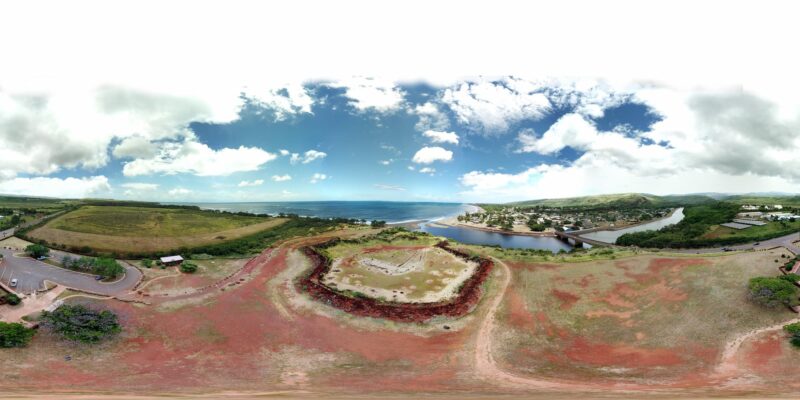
The Russian Fort Elizabeth on Kauaʻi, the Waimea River and the Waimea State Park Beach where Captain James Cook first landed in Hawai’i in January, 1778 – an aerial 360 degree VR from 118 feet. Image credit: Kaleomokuokanalu Chock, source.
Recommended visit: Short stop. Located in Waimea, stop by on your way to or from Waimea Canyon. Have a picnic if you want, or simply take a short walk to see the statue and where the old fort was located. Reading up on the history beforehand will enhance your visit.
Prince Kuhio Birthplace and Park
Prince Kuhio remains one of Hawaiʻi’s earliest “official” U.S. politicians. In 1900, just two years after Hawaiʻi became a U.S. territory, Kuhio began his tenure as a delegate to U.S. Congress and served in that role for 19 years. Today, his birthplace and legacy are preserved in Poʻipū, with a park and statue dedicated to his name. His birthday, March 26th, is a holiday in Hawaiʻi.
Recommended visit: With views of the ocean, Prince Kuhio Park is a great place for a quiet, calm morning walk in Poʻipū.
Cultural Experiences
If you’re looking to further immerse in Hawaiian culture, these are some great ways to do so:
- Kōloa Heritage Trail
- Mahaʻulepu Heritage Trail
- Makauwahi Cave Reserve (now closed)
- Queen Emma’s Cottage
Kōloa Heritage Trail
Poʻipū and the south shore of Kauaʻi may be the hub of tourism on the island, but there are still plenty of historic and cultural sites to check out. An easy, efficient way to do so is to follow the 14-stop, self-guided Kōloa Heritage Trail. Along the trail, you will discover the history of the sugar cane plantation days that once dominated this area (it was Hawaiʻi’s first commercial sugar cane plantation) as well as other cultural and geological sites.
Recommended visit: If you’re extremely interested in this history, you can go through the entire trail in a half day. If you have a general interest, keep the itinerary handy and pick off spots here and there throughout your trip as you pass by them going to and from other activities.
Mahaʻulepu Heritage Trail
The Mahaʻulepu Heritage Trail runs 2 miles (one way) along the south shore coast. The scenic beauty alone is reason enough to check it out, but add in the myriad of natural, historical, and cultural points along the way, and it creates a very deep and beautiful day hike.
Recommended visit: This trail is family friendly and should take about a half day to complete, depending on how often you stop. The trail starts at Shipwreck Beach, leaving the developed resort area and following the natural coastline. Ocean views are constant, but shade is limited. Avoid the heat of the day and bring plenty of water and snacks.
Makauwahi Cave Reserve (closed until further notice)
Also on the south shore is the Makauwahi Cave Reserve, a place were geology and culture come together beautifully. The site is not just an example of successful native restoration, but also a place where significant cultural events took place, including royal births. The tour takes you inside the cave and also on a walking path that explores the area around it.
Recommended visit: Free guided tours take place daily, but be sure to call ahead to confirm. Exploring the cave site will take an hour or two, but bring rations and supplies to hang out for a few hours on nearby Gillin’s/Mahaʻulepu Beach to experience a calmer side of the south shore.
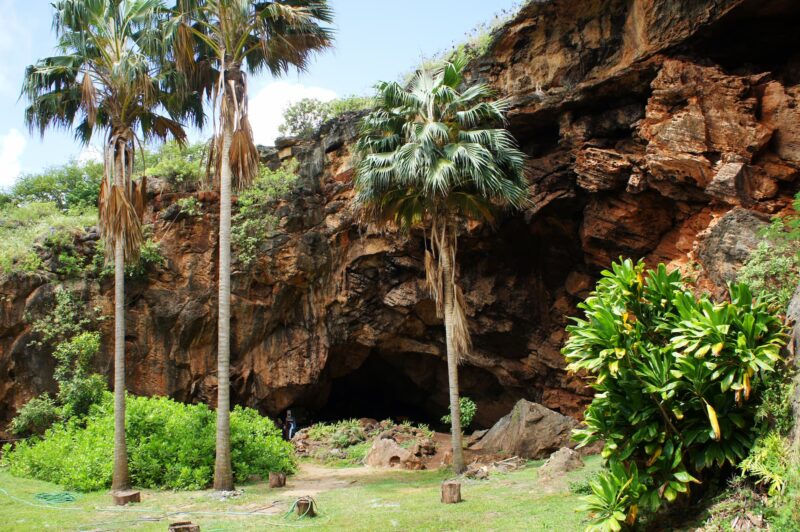
The Makauwahi Cave Reserve on Kauaʻi. Image credit: Wolfram Burner, source.
Queen Emma’s Cottage
What does a Royal Queen do when she loses a son? In this case, Queen Emma traveled from Oʻahu to Kauaʻi and laid low. The cottage she stayed at, once located on a bluff overlooking Lawai Bay, has since been moved to its location today at the National Tropical Botanical Gardens. Seeing the cottage provides a glimpse at how Hawaiʻi royalty lived and traveled back in the day.
Recommended visit: Queen Emma’s Cottage is located at the Allerton National Tropical Botanical Gardens. Check it out when/if you visit the latter.
Archaeological Sites
A heiau is a temple or place of worship. They are very sacred in Hawaiian culture and come in different shapes and sizes, ranging from stone platforms a few feet across to complexes stretching hundreds of feet with a variety of structures.
Alekoko Fishpond
Fishponds are a prime example of the sustainability and environmental stewardship cultivated by Native Hawaiians. You can find them all over the islands, with many in the process of being restored and some even welcoming visitors. The Alekoko Fishpond in Līhuʻe is thought to have been built about 1,000 years ago (!) and is a prime example, although its conservation has kept its immediate shores closed to the public.
Recommended visit: You can view the fishpond from an overlook on Hulemalu Road, but unless you get on a kayak, the rich history and importance is difficult to ascertain. We recommend joining a tour to get the full experience and to learn more about how fishponds operate. Most kayak tour operators in Līhuʻe will have an itinerary that passes by the pond and the nearby Hulēʻia National Wildlife Refuge.
Kāneiʻolouma Heiau
Located amongst the bustle of Poʻipū is the Kāneiʻolouma Heiau, a relatively new cultural site. In 2008, the 13-acre complex was overgrown and out of public view. Little by little, the complex has been uncovered to reveal the remains of a large Hawaiian settlement or village. We recommend checking out the before and after photos at the link above to really get a sense of its scope!
Recommended visit: Tours of the complex are being planned for the future, but as of now, the only way to experience Kāneiʻolouma is to explore its interpretive signs posted on its outskirts that explain some of the history and sites. Since it is located right there in Poʻipū, it’s an easy place to check out as you move about, and a nice perspective on how things have changed.
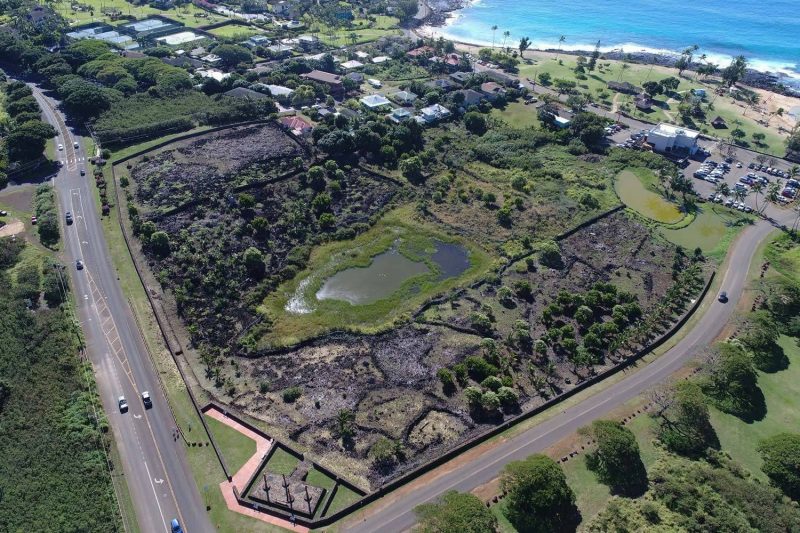
Aerial view from 2019 of the Kāneiolouma Heiau showing the ongoing progress of the restoration efforts. Credit: the Kāhua O Kāneiolouma website.
State Parks
Like all the Hawaiian Islands, Kauaʻi offers a wonderful assortment of state parks that span a variety of interests, including monuments, parks, recreation areas, cultural sites, and scenic coastlines. While some parks, like Kōkeʻe, have already been discussed on this page, we encourage you to explore others and stop by for a look when you’re in the area. Other parks, like Polihale State Park, are worthy of dedicating an entire day for their sights and great hikes and beaches.
Learn more about Kauaʻi State Parks on the DNLR website.
Map
Use the map below to orient and find all historic and cultural sights and attractions mentioned on this page:
Cultural and historical experiences on the other Hawaiian islands
If you want to know more about discovering the rich historical heritage on the other Hawaiian islands we recommend our following guides:
